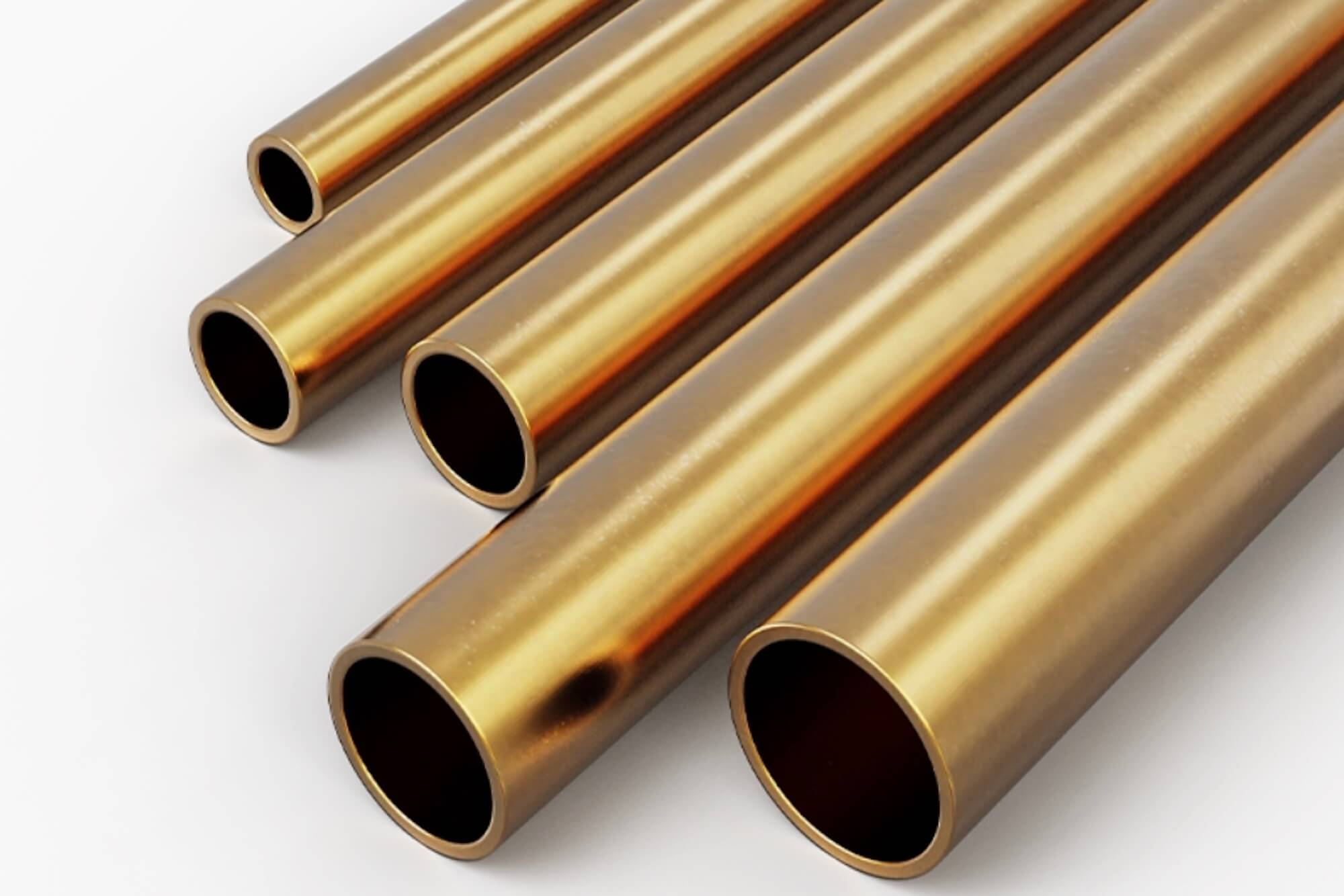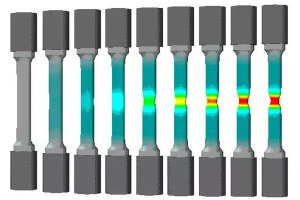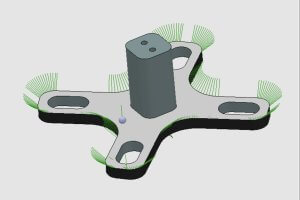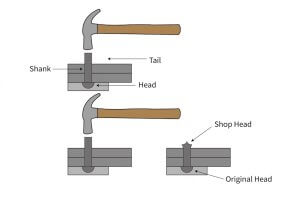Introduction: Why Brass Pipe Matters in CNC Projects
Brass pipe is one of those materials engineers and buyers often overlook until they face a challenge only brass can solve. Early in my engineering career, I underestimated how versatile brass pipes could be. But after multiple projects involving CNC customization, I realized brass pipe wasn’t just decorative—it was a powerful solution.
Brass pipe combines aesthetics, machinability, and durability. It’s used widely in applications ranging from plumbing and fluid control to precision instruments and decorative fixtures. When customized via CNC machining, brass pipe quickly transforms into precision components tailored exactly to your project’s requirements.
This article shares practical insights based on real experiences machining brass pipe. Whether you’re designing precision instruments or sourcing customized brass fittings, I’ll guide you through what matters most—materials, CNC machining considerations, design strategies, and effective sourcing tips.
What Is Brass Pipe? Grades, Properties & Common Uses
Before getting into CNC specifics, let’s clarify what brass pipe actually is.
Brass pipe is typically made from copper-zinc alloys, widely recognized for excellent machinability, corrosion resistance, and mechanical strength. It’s used extensively across industries because of its balance of functional performance and aesthetic appeal.
Common Brass Alloys for Pipes
Not all brass pipes are created equal. Different alloys deliver different properties. Here are common grades I frequently encounter:
| Alloy Grade | Composition (Copper-Zinc %) | Machinability | Corrosion Resistance | Typical Applications |
|---|---|---|---|---|
| C36000 | 61.5% Cu, 35.5% Zn, 3% Pb | Excellent | Good | CNC fittings, plumbing, connectors |
| C46400 | 60% Cu, 39.25% Zn, 0.75% Sn | Good | Excellent | Marine fittings, corrosion-prone areas |
| C23000 | 85% Cu, 15% Zn | Moderate | Excellent | Decorative fixtures, electrical parts |
| C33000 | 65% Cu, 35% Zn | Good | Moderate | General plumbing, industrial piping |
| C37700 | 59% Cu, 39% Zn, 2% Pb | Very Good | Good | Industrial fittings, valves |
| C27200 | 63% Cu, 37% Zn | Good | Good | Structural components, architectural |
I mostly recommend C36000 because its high machinability drastically reduces CNC processing time and tool wear. But when corrosion resistance matters more, C46400 is my go-to.
Brass Pipe vs Brass Tube: What’s the Difference?
People often confuse brass pipe with brass tube. Technically, brass pipe is measured by nominal sizes and intended for fluids, while brass tube is measured by exact dimensions (outer diameter and wall thickness), often for structural or mechanical purposes.
Common Applications of Brass Pipe
- Plumbing and fluid control fittings: valves, connectors, elbows
- Precision instruments: pressure gauges, sensors, instrumentation fittings
- Architectural & decorative uses: railings, lighting fixtures, decorative handles
- Electrical connectors and housing: terminals, shielding tubes
- Marine hardware: fittings, valves, corrosion-resistant connections
I’ve machined brass pipes for fluid-control manifolds and sensor housings, which required both precise threads and excellent corrosion resistance. CNC machining allowed us to meet tight tolerances easily, enhancing assembly reliability and product lifespan.
Can Brass Pipe Be CNC Machined?
Yes—brass pipe is highly CNC machinable. But machining hollow structures like brass pipes brings specific challenges you must anticipate. Here’s what I’ve learned through experience.
Machinability of Brass Pipe: Strengths and Challenges
Strengths:
- Excellent chip formation, leading to smoother cuts
- Less tool wear compared to steel or stainless steel
- Good dimensional stability
Challenges:
- Thin walls can deform or collapse under pressure
- Burr formation, especially when threading or drilling
- Vibration and chatter can occur during machining
Common CNC Machining Issues and Solutions
I’ve encountered several CNC machining issues with brass pipe. Here’s how I resolved them:
| Issue | Cause | Solution |
|---|---|---|
| Wall deformation | Excessive clamping pressure | Soft jaws or custom fixtures, lighter clamping |
| Burrs and sharp edges | Tool wear or incorrect parameters | Sharp carbide tooling, lower feeds at exits |
| Vibration & chatter | Thin walls or high spindle speeds | Reduce speed, rigid tooling setups |
| Thread tearing or galling | Poor lubrication or dull tools | Cutting oil or coolant, sharp thread inserts |
| Diameter variation | Improper fixturing | Precision collet or mandrel fixtures |
During one project machining thin-walled brass pipe connectors, initial attempts caused unacceptable wall deformation. Switching to precision collet fixtures and reducing clamping pressure solved the issue completely.
Recommended CNC Parameters for Brass Pipe Machining
Based on personal CNC experience, here are some parameters I commonly use:
| Operation | Tool Type | Spindle Speed (RPM) | Feed Rate (mm/min) | Coolant Use |
|---|---|---|---|---|
| Cutting | Carbide insert saw blade | 1500–3000 | 500–800 | Optional |
| Turning | Carbide turning inserts | 2000–4000 | 200–400 | Recommended |
| Drilling | Carbide twist drills | 1200–2500 | 100–200 | Highly Recommended |
| Threading | Carbide threading inserts | 1000–2000 | 100–150 | Recommended |
| Milling | Carbide end mills | 2500–4500 | 250–500 | Recommended |
Coolant or cutting oil is recommended to enhance surface finish and prolong tool life. For threaded or detailed components, I always use lubrication to prevent tool galling and ensure clean thread profiles.
Personal CNC Machining Tips for Brass Pipe
- Always start with fresh, sharp carbide tooling.
- Use gentle clamping and special fixtures for thin-wall pipe.
- Experiment on scrap pipe first, to refine parameters.
- Regularly check tool wear to prevent burrs and poor finish.
One project required consistent threading of brass pipe ends. Initially, burrs and rough threads were an issue. After using sharp carbide threading inserts and dedicated coolant, thread quality significantly improved, and reject rates dropped dramatically.
CNC Machining Operations on Brass Pipe
Once you’ve established brass pipe can be CNC machined, it’s important to know which operations make sense for your specific application. From personal experience, brass pipe responds exceptionally well to various CNC processes if handled correctly.
Here’s a practical breakdown of common CNC machining operations used with brass pipe and key considerations for each:
Cutting & Trimming
Cutting brass pipe to precise lengths is one of the most common CNC operations. Using carbide saw blades on CNC lathes or saw machines achieves high accuracy and minimal burr formation.
My Tips:
- Keep spindle speeds moderate (around 2000 RPM).
- Use sharp carbide saw blades.
- Always use cutting fluid or coolant for better finish.
Drilling
Drilling precise holes into brass pipe requires attention due to the pipe’s thin walls. When drilling through brass pipe, tool rigidity and appropriate speeds are critical.
Recommendations:
- Solid carbide twist drills perform best.
- Moderate spindle speeds (1200–2500 RPM) avoid chatter.
- Always use coolant to reduce heat and burr formation.
Threading & Tapping
Brass pipe is highly receptive to threading, essential in fluid handling applications. CNC thread milling or tapping can produce reliable and clean threads.
Important Notes:
- Carbide threading inserts provide clean threads.
- Lubrication or coolant is essential to prevent tearing.
- Keep feed rates moderate (100–150 mm/min) for smoother threads.
Turning (Outer Diameter & Facing)
Turning brass pipe on CNC lathes provides excellent dimensional control. I often turn brass pipe for decorative parts or precision connectors, requiring specific tolerances and surface finishes.
Turning Parameters:
- Carbide turning inserts
- RPM: 2000–4000, Feed: 200–400 mm/min
- Coolant recommended to avoid heat buildup
Slotting & Chamfering
Cutting slots or chamfers in brass pipe is common for creating interlocking or sealing surfaces.
Best Practices:
- Use small diameter carbide end mills for slots.
- Chamfer pipe edges using carbide chamfer tools at moderate speeds (2500 RPM).
- Apply coolant or lubricant to maintain sharp edges and reduce burrs.
Engraving or Marking
Engraving brass pipe via CNC is common for identifying parts or decorative purposes. It offers precision markings without damaging structural integrity.
My Advice:
- Use small carbide engraving tools or ball-end mills.
- Set high RPM (4000–5000) with slower feeds (100–200 mm/min).
- Coolant helps maintain tool life and surface quality.
CNC Machining Operations Summary Table
| Operation | Recommended Tools | RPM Range | Feed Rate (mm/min) | Coolant/Lubrication |
|---|---|---|---|---|
| Cutting | Carbide saw blade | 1500–3000 | 500–800 | Optional |
| Drilling | Carbide twist drill | 1200–2500 | 100–200 | Highly recommended |
| Threading | Carbide thread insert | 1000–2000 | 100–150 | Recommended |
| Turning | Carbide turning insert | 2000–4000 | 200–400 | Recommended |
| Slotting | Small carbide end mill | 2500–4000 | 150–300 | Recommended |
| Engraving | Carbide engraving tool | 4000–5000 | 100–200 | Recommended |
Having these parameters handy helps me achieve consistently good results when machining brass pipe on CNC equipment.
Design Tips for CNC Integration
When designing assemblies involving brass pipe, engineers often overlook subtle details that significantly affect machinability and performance. Over the years, I’ve found a few design strategies crucial for success:
Wall Thickness & Structural Integrity
Thin-walled brass pipes deform easily under CNC machining forces. A good rule of thumb is maintaining a wall thickness at least 15–20% of the pipe’s diameter for stable machining.
Preventing Distortion & Deformation
Holding brass pipe in a CNC chuck can cause deformation. To avoid this, consider:
- Using soft jaws or custom-made collets.
- Reducing chucking pressures to minimal levels.
- Supporting pipes internally (mandrels) when machining thin walls.
In my early CNC experiences, pipes frequently crushed in standard chucks. After switching to soft jaws and mandrels, I eliminated nearly all deformation problems.
Thread and Seal Interface Design
If your brass pipe connects fluid or pneumatic systems, pay close attention to thread design and sealing surfaces:
- Include chamfers on thread entries to ease assembly.
- For pressurized fittings, consider tapered or O-ring grooves.
- Maintain thread engagement at least equal to pipe wall thickness to avoid stripping or leaks.
Avoiding Galvanic Corrosion
Pairing brass pipes with dissimilar metals (like aluminum or steel) can lead to galvanic corrosion. I recommend:
- Using insulating washers or sleeves.
- Selecting compatible alloys or brass grades with minimal galvanic potentials.
- Applying anti-corrosion treatments if unavoidable.
Recommended Design Tolerances for Brass Pipe CNC Integration
| Dimension Type | Recommended Tolerance |
|---|---|
| Pipe Length | ±0.2 mm |
| Outer Diameter | ±0.05 mm |
| Thread Pitch Diameter | ±0.1 mm |
| Hole Diameter | +0.05 mm (slight oversize) |
| Slot or Groove Width | ±0.05 mm |
Using these tolerances has consistently delivered trouble-free assemblies in my projects.
Brass Pipe Standards, Sizes & CNC Machining Parameters
Brass pipe is available in numerous standard sizes. The following tables provide helpful reference points from my own sourcing and machining experience.
Common Brass Pipe Sizes & Wall Thicknesses
| Nominal Size (inch) | Outer Diameter (mm) | Wall Thickness (mm) |
|---|---|---|
| 1/8″ | 10.3 | 0.8–1.2 |
| 1/4″ | 13.7 | 0.8–1.5 |
| 3/8″ | 17.1 | 0.8–1.5 |
| 1/2″ | 21.3 | 1.0–2.0 |
| 3/4″ | 26.7 | 1.2–2.5 |
| 1″ | 33.4 | 1.5–3.0 |
CNC Machining Specs for Common Brass Pipe Sizes
| Pipe OD (mm) | Spindle Speed (RPM) | Feed Rate (mm/min) | Tool Type |
|---|---|---|---|
| 10–15 | 2500–4000 | 150–300 | Carbide inserts/end mills |
| 16–25 | 2000–3500 | 200–400 | Carbide inserts/end mills |
| 26–35 | 1500–3000 | 250–500 | Carbide inserts/end mills |
| >35 | 1200–2500 | 300–600 | Carbide inserts/end mills |
These parameters help avoid vibration, burr formation, and achieve consistently smooth surfaces.
Sourcing CNC-Ready Brass Pipe and Machining Services
Finding quality brass pipe for CNC machining might seem straightforward, but I’ve found sourcing to be crucial. Choosing the wrong supplier can lead to inconsistent quality, unexpected costs, and production delays.
Here’s what I consider most important when sourcing brass pipe:
Key Considerations for Brass Pipe Suppliers
- Alloy Certification:
Suppliers should provide clear material certifications (e.g., ASTM standards) for alloys such as C36000 or C46400. - Dimensional Consistency:
Precise outer diameter and wall thickness reduce machining setup time. I always request dimensional inspection reports. - Availability of Custom Lengths:
Ordering brass pipe pre-cut to lengths minimizes CNC cutting time and reduces waste. - MOQ (Minimum Order Quantities):
Suppliers flexible enough to handle small to medium batch orders are ideal, especially for prototyping and custom projects. - Lead Time & Delivery Reliability:
Reliable suppliers offer clear lead times and consistently deliver on schedule, helping prevent costly delays. - Packaging & Handling:
Good packaging prevents surface scratches or deformation during transport. Insist on well-packaged deliveries.
Recommended Suppliers for CNC-Ready Brass Pipe
Here’s a quick reference table of suppliers I’ve worked with directly or researched carefully:
| Supplier | Location | Alloy Options | Custom Length | MOQ Flexibility | Delivery Reliability |
|---|---|---|---|---|---|
| McMaster-Carr | USA | Excellent | Yes | Good | Excellent |
| OnlineMetals.com | USA | Very Good | Yes | Very Good | Very Good |
| Metals Depot | USA | Good | Limited | Moderate | Good |
| Alibaba Verified Vendors | China | Excellent | Yes | Flexible | Good (Varies) |
| Wieland Chase | USA | Excellent | Yes | Large orders | Excellent |
I’ve frequently used McMaster-Carr and OnlineMetals for quick-turn projects with great results. For larger or specialized orders, working directly with mills or verified Alibaba vendors has provided significant cost advantages.
Conclusion
Choosing brass pipe for CNC machining is often more than a simple materials decision—it’s a strategic choice affecting quality, durability, and project success. Based on years of practical experience, I’ve learned brass pipe is uniquely versatile, offering precision, reliability, and cost-effectiveness in countless engineering applications.
To recap key points:
- Brass pipe offers excellent CNC machinability, especially alloys like C36000.
- Proper CNC parameters, tooling choices, and fixturing prevent common issues like deformation and burr formation.
- Thoughtful design practices enhance assembly integrity, especially in fluid or pressure-sensitive applications.
- Carefully choosing reliable suppliers significantly impacts project timelines and quality.
FAQ
To help engineers and buyers make informed decisions, here are answers to common questions I regularly encounter about brass pipe CNC machining:
- Can brass pipe be CNC machined without collapsing?
Yes, using soft jaws, internal supports, or mandrels during clamping prevents deformation. - What is the best brass grade for CNC machining pipe parts?
C36000 is ideal due to superior machinability, though C46400 is better for corrosion resistance. - What’s the difference between brass tube and brass pipe?
Brass pipe is measured nominally and meant for fluids, while brass tube is precisely dimensioned for structural purposes. - Can you thread brass pipe using CNC?
Yes, threading brass pipe on CNC equipment yields accurate, clean threads, especially with carbide inserts. - What minimum wall thickness is recommended for CNC machining?
Maintain at least 15–20% of pipe diameter to avoid collapse or deformation. - Is coolant necessary when CNC machining brass pipe?
Coolant or cutting oil is recommended to improve finish and extend tool life. - How to avoid burrs when CNC machining brass pipe?
Use sharp carbide tools, moderate spindle speeds, and coolant. - What CNC tooling works best for brass pipe machining?
Carbide inserts, carbide end mills, and carbide drills consistently perform best. - Can brass pipe be CNC engraved or marked?
Yes, CNC engraving produces precise marks without weakening structural integrity. - What causes vibration or chatter when CNC machining brass pipe?
High spindle speeds or improper fixturing—reduce speeds and use rigid fixturing to solve this. - Is CNC-machined brass pipe suitable for drinking water systems?
Yes, but select lead-free alloys like C46400 specifically certified for potable water. - Can brass pipe be bent after CNC machining?
Typically, bending is done before machining. Post-machining bending risks deformation or cracking. - Where can small quantities of CNC-ready brass pipe be purchased?
OnlineMetals, McMaster-Carr, and similar specialty metal suppliers offer small quantities. - Can machined brass pipe be plated or coated?
Yes, brass pipe is commonly nickel-plated, chrome-plated, or coated for appearance and corrosion protection. - What machining tolerance is recommended for press-fitting brass pipe?
Typical press-fit tolerances are ±0.02–0.05 mm to ensure reliable assembly without deformation. - Can CNC machining affect brass pipe corrosion resistance?
CNC machining typically does not harm corrosion resistance. Ensure proper coolant cleaning afterward. - How does alloy choice (C360 vs. C464) affect machinability?
C360 offers superior machinability, ideal for intricate CNC operations; C464 provides better corrosion resistance.
📚 References and Further Reading
The following authoritative sources were referenced in preparing this guide. These resources offer additional information on brass pipe materials, CNC machining practices, industry standards, and applications:
- Copper Development Association (CDA)
- Detailed guides on brass alloy specifications and applications.
- https://www.copper.org
- ASTM International Standards
- ASTM B43, ASTM B135 standards covering brass pipe dimensions and alloys.
- https://www.astm.org
- McMaster-Carr Brass Alloy Specifications
- Material properties, machinability ratings, and sourcing details.
- https://www.mcmaster.com
- Online Metals – Brass Pipe & Tube Guide
- Practical information on purchasing brass pipe suitable for CNC machining.
- https://www.onlinemetals.com
- Engineering Toolbox – Brass Material Properties
- Physical and mechanical properties of brass alloys.
- https://www.engineeringtoolbox.com
- Machining Doctor – Brass Machining Parameters
- CNC machining guidelines, including speeds, feeds, and tool recommendations.
- https://machiningdoctor.com
Other Articles You Might Enjoy
- Brass Bushings Explained: Machining Tips, Tolerances, and Use Cases
Introduction: Why Brass Bushings? I remember the first time I truly understood why brass bushings mattered so much in mechanical setups.I was standing in a small workshop, looking at the inner components…
- Brass vs Copper: The Ultimate Guide for Manufacturers and Machinists
Chapter 1: Introduction I’m excited to share my ultimate comparison of brass vs copper for manufacturers and machinists. Having worked with both materials in various machining and manufacturing environments, I know how…
- Brass Punch Machining Guide: Materials, Techniques, and Best Practices
I’m excited to share my comprehensive guide on brass punch machining. I’ve spent years working with different CNC setups, trying various alloys, and optimizing cutting parameters. In this guide, I’ll…
- Custom Brass Fasteners: How CNC Machining Enhances Strength, Precision, and Durability
Hello, and welcome to this comprehensive guide on Brass Fasteners and the pivotal role that CNC machining plays in crafting custom solutions. I’ve spent years working alongside design engineers, procurement managers, and…
- Brass Tacks Demystified: A Deep Dive into Machining Techniques and Innovations
I’ve spent a fair bit of time learning about different metal fasteners, and brass tacks are one of those intriguing items that bridge function and design. When you look at…
- Is Brass Magnetic? How to Test, Use, and Identify Brass in Practical Scenarios
Introduction: Why People Ask “Is Brass Magnetic?” “Is brass magnetic?” is a question that seems simple on the surface. I recall the first time I asked myself this question when…
- How CNC Machining Enhances Brass Color for Perfect Finishes
Chapter 1: Understanding Brass Color and Its Unique Characteristics I’ve always found the natural appeal of brass color to be something that sparks an immediate sense of warmth and sophistication.…
- Brass Tap Manufacturing with CNC Technology: Efficiency and Precision
Introduction to Brass Tap Manufacturing with CNC Technology The world of manufacturing is constantly evolving, and one of the most significant advancements has been the use of CNC (Computer Numerical…









